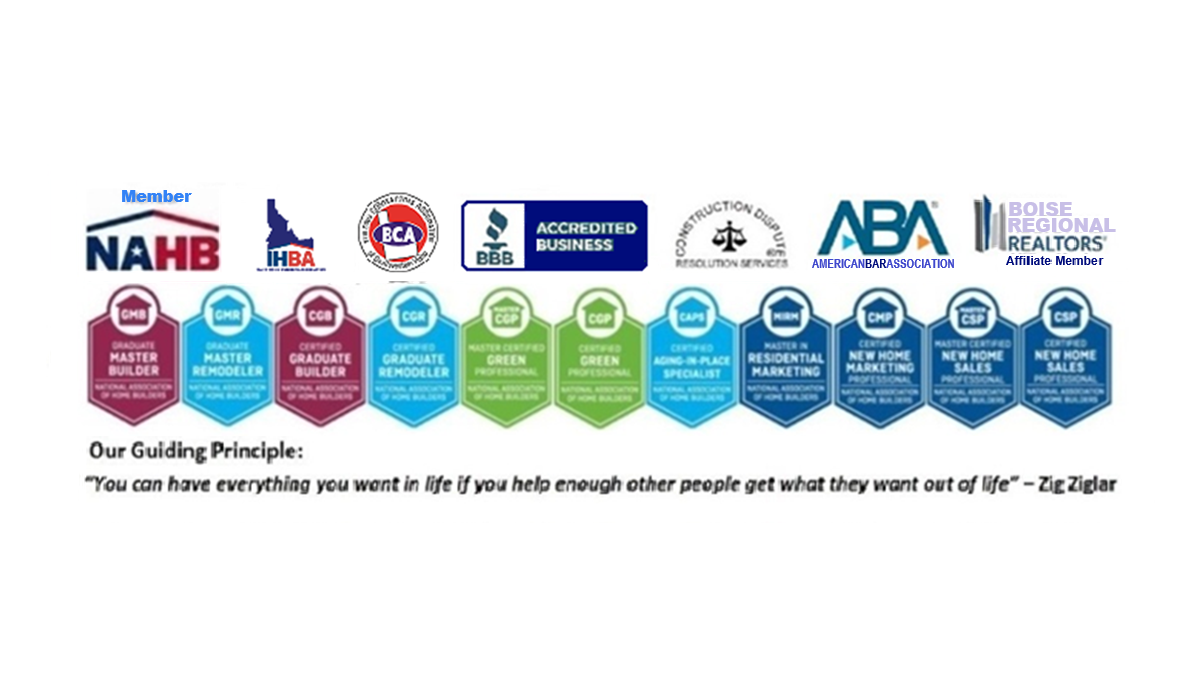The Challenge of Affordable Housing – Part 1

Last week I spent several days interviewing candidates for public office as a member of the Building Contractors Association of Southwestern Idaho Political Action Committee. A majority of the candidates cited the lack of affordable housing as one of major the issues facing us.
It is not a simple issue of supply versus demand. Affordable housing is a multi-dimensional problem. Some of the reasons are beyond our control such as increasing material costs due to tariffs imposed by the federal government or the changing demographics.
However, many of the reasons for the problem ARE within our control or, more accurately, the control of our local elected and appointment government officials. Those reasons include:
- Increasing fees that add to housing costs
- Outdated ordinances that limit the range and mix of housing types
- Unwieldy, lengthy development review and approval processes
- Environmental/growth controls that constrain land supply and developability
- Citizen involvement in nearly every phase of the process adds NIMBY delay and uncertainty
We need to recognize the fact that households encompass an increasingly diverse demographic that has changed over time. Forty-eight percent of adults are single. There are more extended families in multi-generational households. Forty-one percent of young adults live with their parents. Our aging population is living in homes that aren’t very accessible. And we are experiencing a greater divergence in household incomes.
So, let’s start by defining the problem in terms of household incomes.
Generally
speaking, affordable housing in the United States is defined as a percentage of
household income with the consensus being that that housing expenses shouldn’t be more than 30% of what you
earn, leaving 70% of your income for food, clothing, transportation and other
necessities. If you spend more than 30% of your income on housing expenses, you
are considered “overburdened”.
According to the U.S. Census Bureau, the Median Income in 2017 dollars in Ada County is $60,151 for Households, $87,423 for Married Family Households, $33,494 for Non-Family Households. There are 164,389 Total Households, 84,065 Married Family Households, and 59,435 Non-Family Households. Of the Total Households, 68.3% are homeowners and 31.7% are renters. For Married Family Households, 82.8% are homeowners and 17.2% are renters. For Non-Family Households, 53.4% are homeowners and 46.6% are renters. But with regard to homeowners, we need to keep in mind that the median home price has almost doubled in the last 10 years and I believe it’s safe to assume that the majority of homeowners purchased their homes for much less than the current median home price.
According to the Boise Regional Realtors, the Median Sales Price for homes in Ada County is currently $355,000. A 20% down payment would be $71,000 and the mortgage would be $284,000. At current interest rates for a 30-year fixed rate mortgage, the monthly payment including property taxes and insurance would be approximately $1,850 or 36.9% of the median household income, 25.4% of the median household income for married families, and 66.3% of the median household income for Non-Families.
A 3.5% down payment for an FHA loan would be $12,425 and the mortgage amount would be $342,575. At current interest rates for a 30-year fixed rate mortgage, the monthly payment including property taxes, insurance, and private mortgage insurance would be approximately $2,276 or 45.4% of the median household income, 31.2% of the median household income for married family households, or 81.5% of the median household income for Non-Family households.
We also need to keep in mind that the median is the middle point and that half the numbers are above the median and half are below. For Total Households, approximately 49% have incomes less than the median. For Non-Family Households, the percentage is 74.4%.
But household incomes are not something we can control, so we will focus on those reasons we can.



Next topic: Increasing fees that add to housing costs


